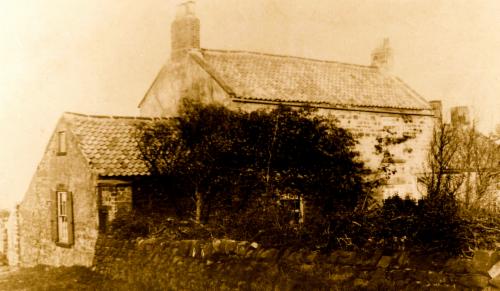Windy Nook, High Heworth
extra stuff to that found here and here and here
This is on the gable end of St Alban's Cres
I have become increasingly interested in Windy Nook, a place I pass through a lot between Low Fell where I belong and High Heworth where I now live. I have long been aware of the Nature Reserve, the "Fortress" sitting atop the landscaped slag heap and the "church" born out of a pease pudding factory born out of the Windy Nook Cooperative Society's High Heworth branch, born out of The Wylam family's home in the monstrous Farm House of High Heworth Farm. Let's start there with my take on Windy Nook's history.
I bought a book by John Oxberry, written in 1924, describing the first 50 years of Windy Nook Co-op and, not for the first time, I was well impressed with the Quarrymen, the ordinary working men of Windy Nook who laboured in their own spare time to provide the village with a water source by feeding water from the Greenbourne to a pant built opposite the church gates.
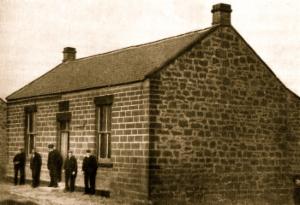
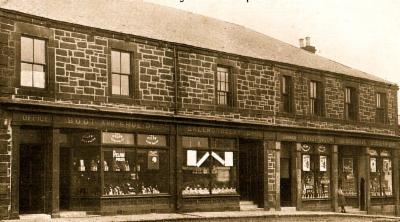
Following the first branch was branch No 2 on Windy Nook Road, then No 3 in Eighton Banks and finally No 4 at High Heworth Colliery...that's the former farm house cum co-op cum pease pudding factory cum place of worship that I mentioned earlier
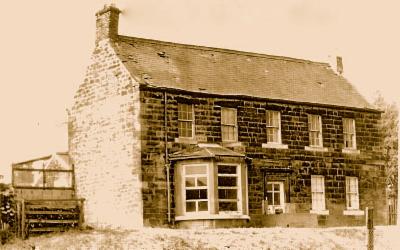
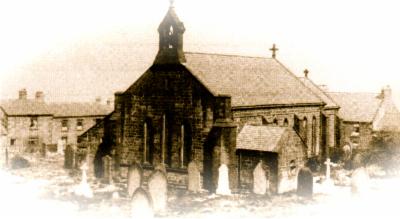
St Alban's, an Anglican church, was the first purpose built place of worship, operational in 1842, in the charge of the Rev Edward Hussey Adamson
The Primitive Methodists chapel on Albion Street came next, opened in 1864. Click the PM link above to read more by expert Richard Jennings and see a pic of that chapel.
In the late1820's Henderson's Academy made its appearance but the appearance of this particular building was, per the carving above the door, in 1849.
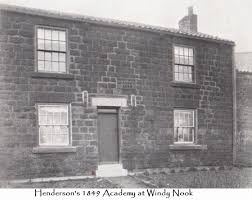
There was also a school run in two cottages in the Stead by the vicar of Heworth. This was followed 6 years later in 1842 by a formal church school at the top of Coldwell Lane.
An entry in William's 1844 Trade Directory reads
National School for Boys Wm Arthur
National School for Girls A. Balfour, mistress
In 1850 teachers were Ann Simpson and John Mitchison, per Ward's Trade Directory
But in 1854 William Battersby is known to have taken over..still there in 1856
The story of the Black House (once variously known as the Coal Waggon, the Waggon and the Crown and Thistle) is quite complex. According to
Local records : or, Historical register of remarkable events, which have occurred in Northumberland and Durham, Newcastle-upon-Tyne, and Berwick-upon-Tweed from the earliest period of authentic record to the present time; with biographical notices of deceased persons of talent, eccentricity, and longevity
on Jan 31st 1844
"This morning, the Dragon public-house, at Windy Nook, near Gateshead, occupied by Mr. T. Dixon, was entirely burnt down...."
There is no evidence that there was an additional pub of that name in Windy Nook and for a long time the inn keeper Thomas Dixon had the Waggon...not the Dragon so this is certainly a mishearing or a misprint. So, if true that the Waggon was destroyed by fire in 1844 it must have been rebuilt and within a few years was named the Crown and Thistle for about 6 years before becoming the Black House. According to
History, Topography, and Directory of Northumberland, Comprising a General Survey of the County, and a History of the Town and County of Newcastle-Upon-Tyne, With Separate Historical, Statistical, and Descriptive Sketches of the Boroughs of Gateshead and Berwick-Upon-Tweed, and All the Towns, Wards, and Manors. to Which Is Subjoined a List of the Seats of the Nobility and Gentry
In 1855 Thos Dixon is shown as having the Crown and Thistle
In 1857 Thos Dixon is shown as having the Black House
See this Bell’s Life in London comment 1857
"Robt. Elliott of Windy Nook will fly his pigeon against any man's of the same place, for £5 or £10 a side. A match can be made to-morrow night, (Monday) at Mr Thos. Dixon's, Black House, Windy Nook."
The Crown and Thistle name represents the Union between the Crowns of England and Scotland which formally occurred in 1707. The 150th anniversary of that event was in 1857 and there is some evidence that the name Crown and Thistle in England and Thistle and Crown in Scotland had a revival..in pub names, street names etc
Here's what it's name was and when and who had it, according to various trade directories which I have personally inspected
Coal Waggon 1827 William Park
Coal Waggon 1828 William Park
Coal Waggon1833 R Smart
Waggon 1841 Robert Robson
Waggon 1844 Thomas Dixon (Fire)
Waggon 1848 Thomas Dixon
Crown & Thistle 1850 Thomas Dixon
Crown & Thistle 1851 Thomas Dixon..also shown as quarry owner
Crown & Thistle 1853 Thomas Dixon
Crown & Thistle 1855 Thomas Dixon
Crown & Thistle 1856 Thomas Dixon
Black House 1857 Thomas Dixon
Black House 1875 William Reed
Black House 1877 William Reed
Black House 1881 Joseph Purvis
Black House 1895 Mathew Burnett
Black House 1897 Mathew Burnett
So Thomas Dixon had it thro at least 13 years and 3 different names. After 1857 it didn't change its name from Black House for 156 years, that is until 2013 when it still sold, on an off-licence basis, beers, wines and spirits but added lots more goods, under the name of supermarket giant Tesco's.
I had at one time thought that the Engine was one of the past names of the Black House but I've found an entry in the 1856 Whellan history that reads
Arthur, Thomas vict Engine Beer House, Windy Nook
So, that solves that mystery...but no idea where it was located in the village, nor how long it lasted
While taking this photo I met Kevin, the Warden of the scheme and he showed me the inner courtyard through the arch as well as the Community Room where folk meet on a Tuesday morning and at other times for bingo etc
(i) The Windy Nook Nature Reserve and Park, a great dog walking, bird watching, outdoor gym area created over the big deep hole left behind after Mr Kell was done with his quarrying operations.
And
(ii) "The Windy Nook" art installation built on the top of a mini mountain of colliery waste. The latter is a nice enough adornment to the now natural looking hill...
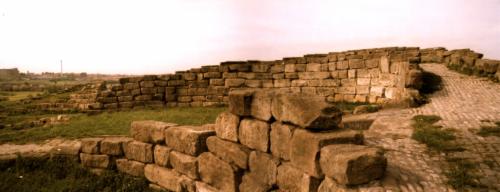
That's no criticism of the artist Richard Cole to whom the stone was made available nor do I concur with a view that it is a bit clumsy to call this "The Windy Nook" when it is physically atop a hill, comprising the waste of High Heworth colliery and beyond the long time boundary of Windy Nook, albeit by just a smigeon. Indeed, in my view the name "Windy Nook" is perfect for this land art and, "Greenbourne Village", for the residential area.
Truth is, it's just a nice name used for a football club as well as streets and pubs all over Britain.
End of..
..in my opinion!!
And finally, here's a farm house sideways on to the road, Coldwell Lane. It's Coldwell House which faced southwards towards Windy Nook. It was opposite the cold well, so slightly out of the Nook
